Bluesky versus Twitter is a hot topic in the social media world, and at COMPARE.EDU.VN, we’re diving deep to provide a clear comparison. This article examines Bluesky and Twitter, highlighting the key differences and similarities to help you decide which platform suits your needs, exploring their features, user experience, and future potential, ultimately aiding in making an informed decision between these social networks.
1. What Is Bluesky And How Does It Differ From Twitter?
Bluesky is a decentralized social media platform aiming to offer a fresh alternative to centralized networks like Twitter. The core difference lies in its architecture: Bluesky is built on the Authenticated Transport (AT) Protocol, allowing for greater user control over data and algorithmic choices. This contrasts with Twitter’s centralized system, where the platform controls the algorithms and data.
- Decentralization: Bluesky’s decentralized nature means users can potentially choose their own algorithms, move their accounts between providers, and have more control over their data.
- AT Protocol: The AT Protocol promotes interoperability, potentially allowing different social networks to communicate with each other.
- Governance: Bluesky aims for more transparent governance, with potential for community involvement in decision-making, unlike Twitter’s top-down approach.
2. User Interface And Experience: Is Bluesky A Twitter Clone?
Bluesky’s initial user interface closely resembles early Twitter, focusing on a simple feed of text-based posts (called “skeets”), profiles, and basic social interactions. However, under the hood and in its future direction, it intends to drastically diverge from Twitter.
- Familiarity: The familiar interface makes it easy for Twitter users to transition to Bluesky.
- Simplicity: Bluesky emphasizes a cleaner, less cluttered experience compared to Twitter’s increasingly complex interface.
- Customization: Bluesky’s custom feeds allow users to curate their experience to a far greater extent than the current Twitter algorithm allows.
Alt: Bluesky Discover feed on social media showing suggested posts.
3. Community And Content Moderation: How Do They Compare?
Bluesky is currently smaller than Twitter, resulting in a different community dynamic. Content moderation on Bluesky is evolving, with a focus on community-driven moderation and algorithmic choices. Twitter’s content moderation policies have been a subject of much debate, particularly since Elon Musk’s acquisition.
- Community Size: Bluesky’s smaller size can foster a more intimate and less chaotic environment. As of this writing, Bluesky has crossed 22 million total users.
- Moderation Philosophy: Bluesky emphasizes user choice in moderation, allowing users to select the algorithms and moderation lists they prefer.
- Safety: Bluesky aims to create a safer environment with less trolling and negativity, although this is an ongoing challenge for all social media platforms.
4. Features And Functionality: What Can You Do On Each Platform?
Both platforms offer basic features like posting text, following users, and engaging with content. Twitter has a broader range of features, including lists, advanced search, and a more mature advertising system. Bluesky is actively developing new features, with custom feeds and decentralized identity as key differentiators.
| Feature | Bluesky | Twitter (X) |
|---|---|---|
| Core Function | Posting “skeets” (text-based posts), following users, liking posts, reposting (similar to retweeting), basic profile customization. | Posting tweets, following users, liking posts, retweeting, advanced search, lists, Moments, polls, communities, Spaces (audio chat rooms), video uploads, live video streaming. |
| Customization | Custom Feeds: Users can create or subscribe to custom feeds that filter content based on specific criteria. Algorithmic Choice: In the future, users may be able to choose different algorithms to determine what content they see. Decentralized Identity: Users can own their identity and move it between different providers. Domain Verification: Users can verify their account by linking it to a domain. | Profile customization (header image, bio), lists for organizing accounts, ability to mute and block accounts. |
| Monetization | No built-in monetization features yet. | Advertising platform for businesses, subscriptions (Twitter Blue) for enhanced features and verification, tipping, Super Follows (allowing creators to offer exclusive content to subscribers). |
| Content Limits | Limited to 300 characters per post. | Free users are limited to 280 characters per tweet. Twitter Blue subscribers can post longer tweets (up to 25,000 characters). |
| Community | Growing community, but still smaller than Twitter. | Large and established community with a diverse range of users. |
| Focus | Decentralization, user control, algorithmic choice, community-driven moderation. | Real-time information, news, public conversation, entertainment, marketing. |
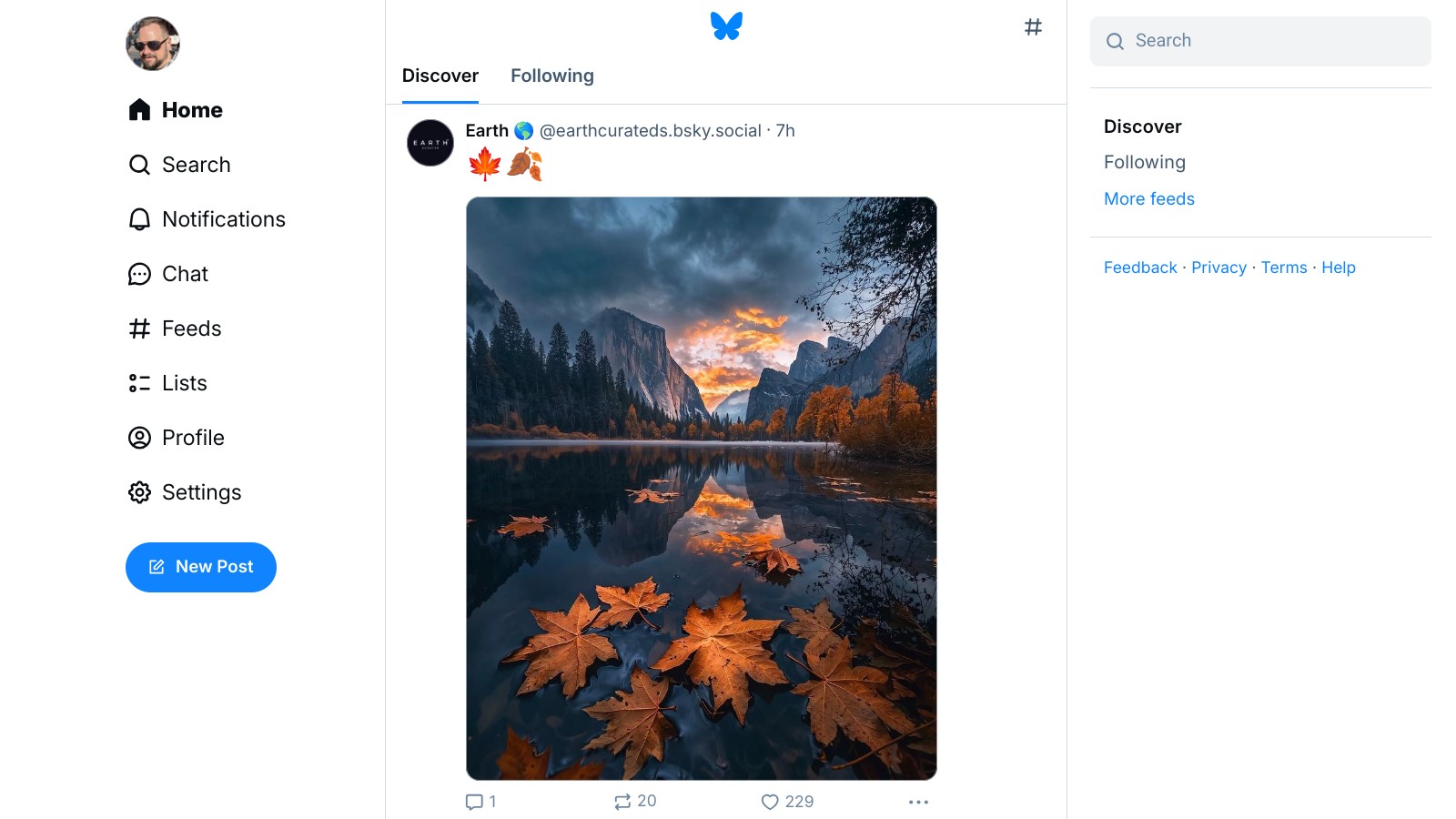
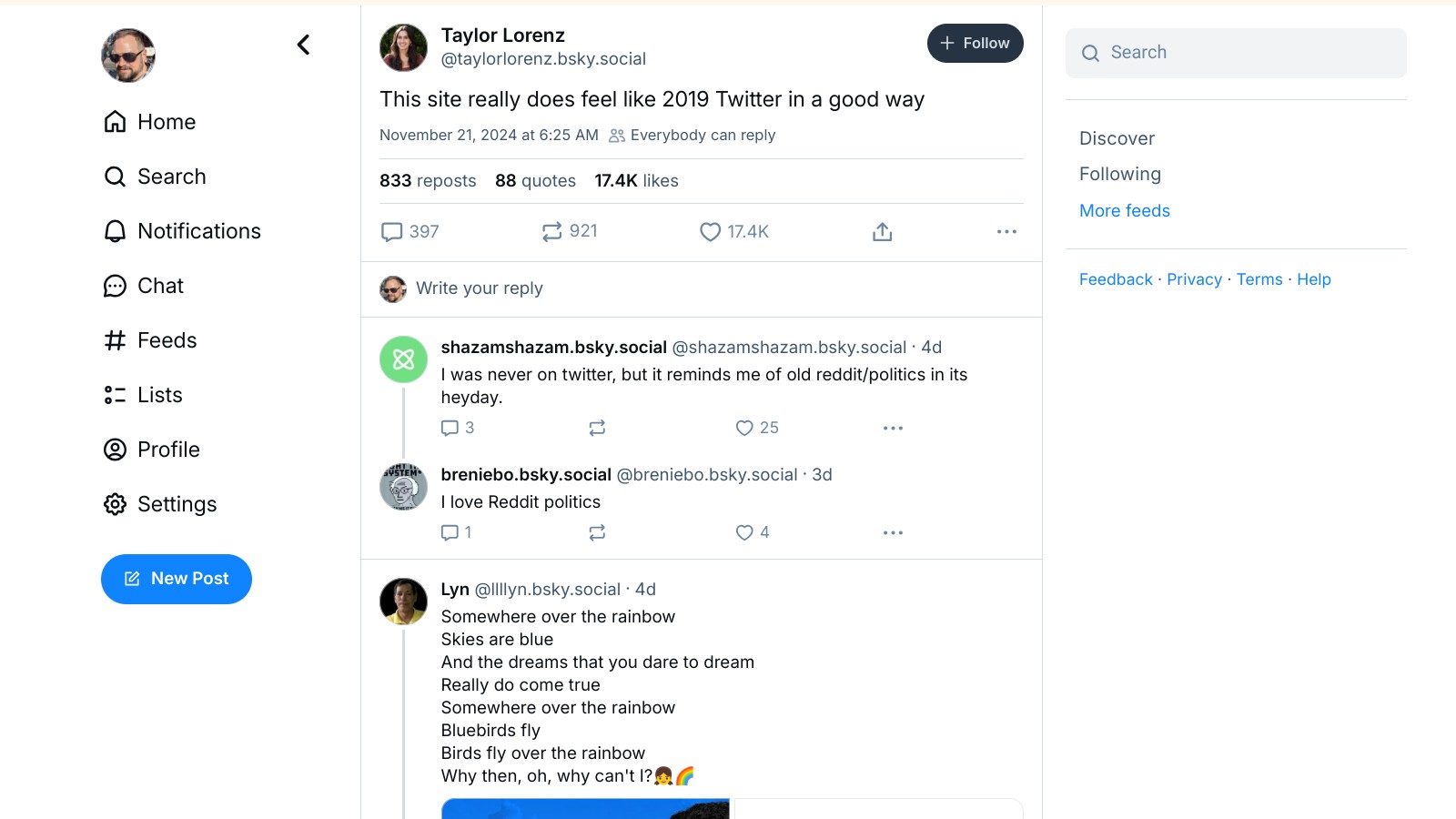
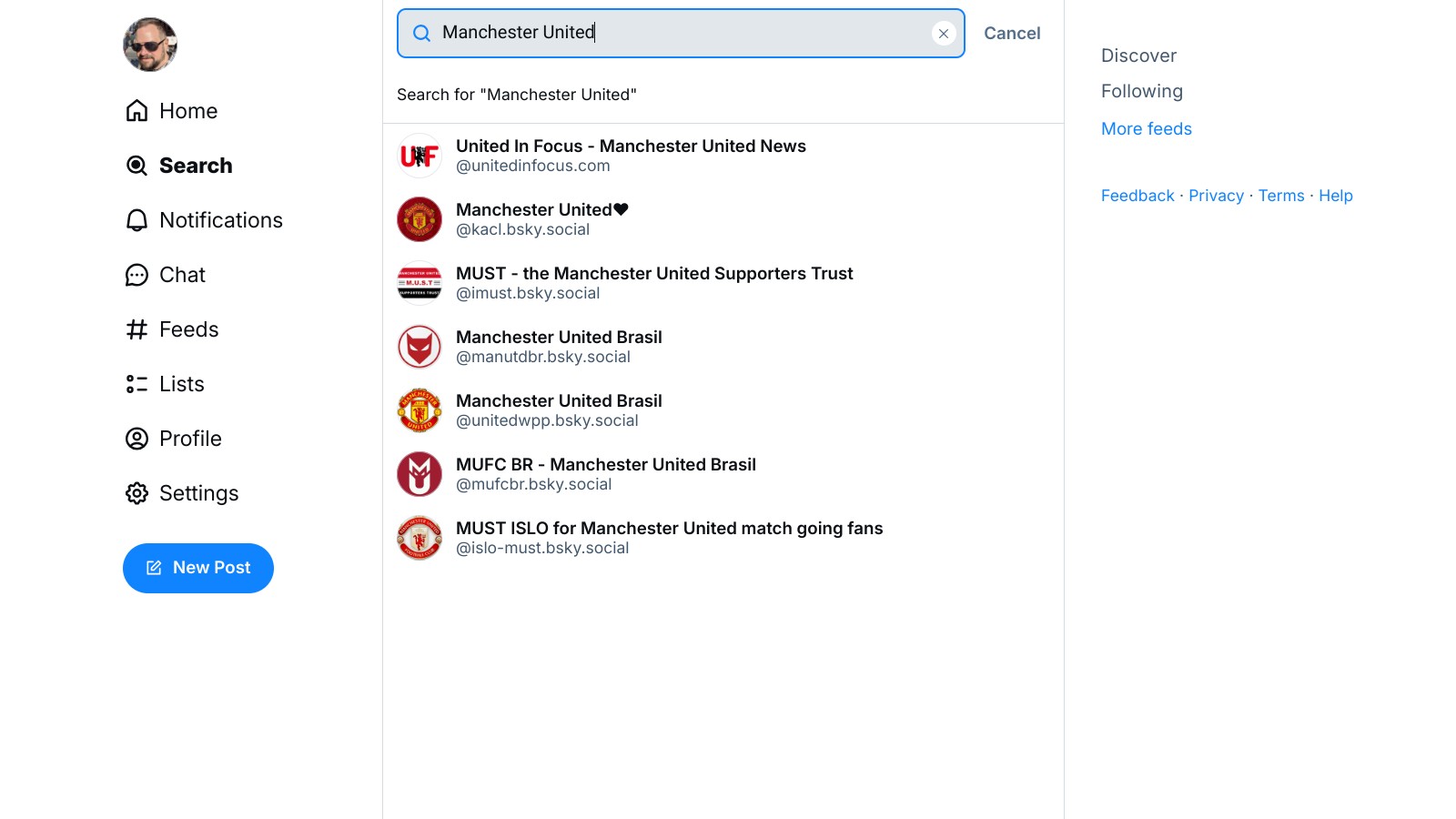
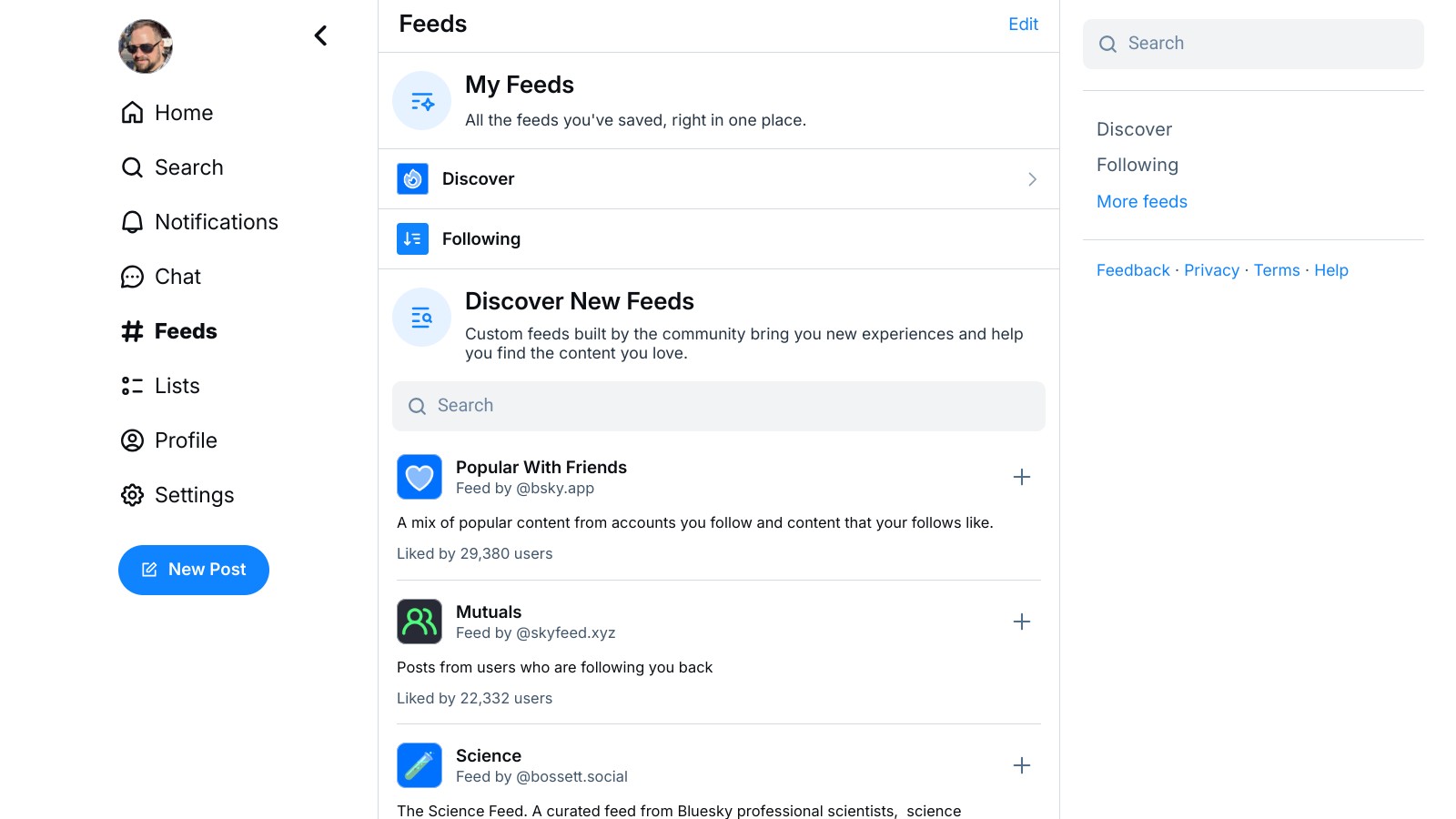
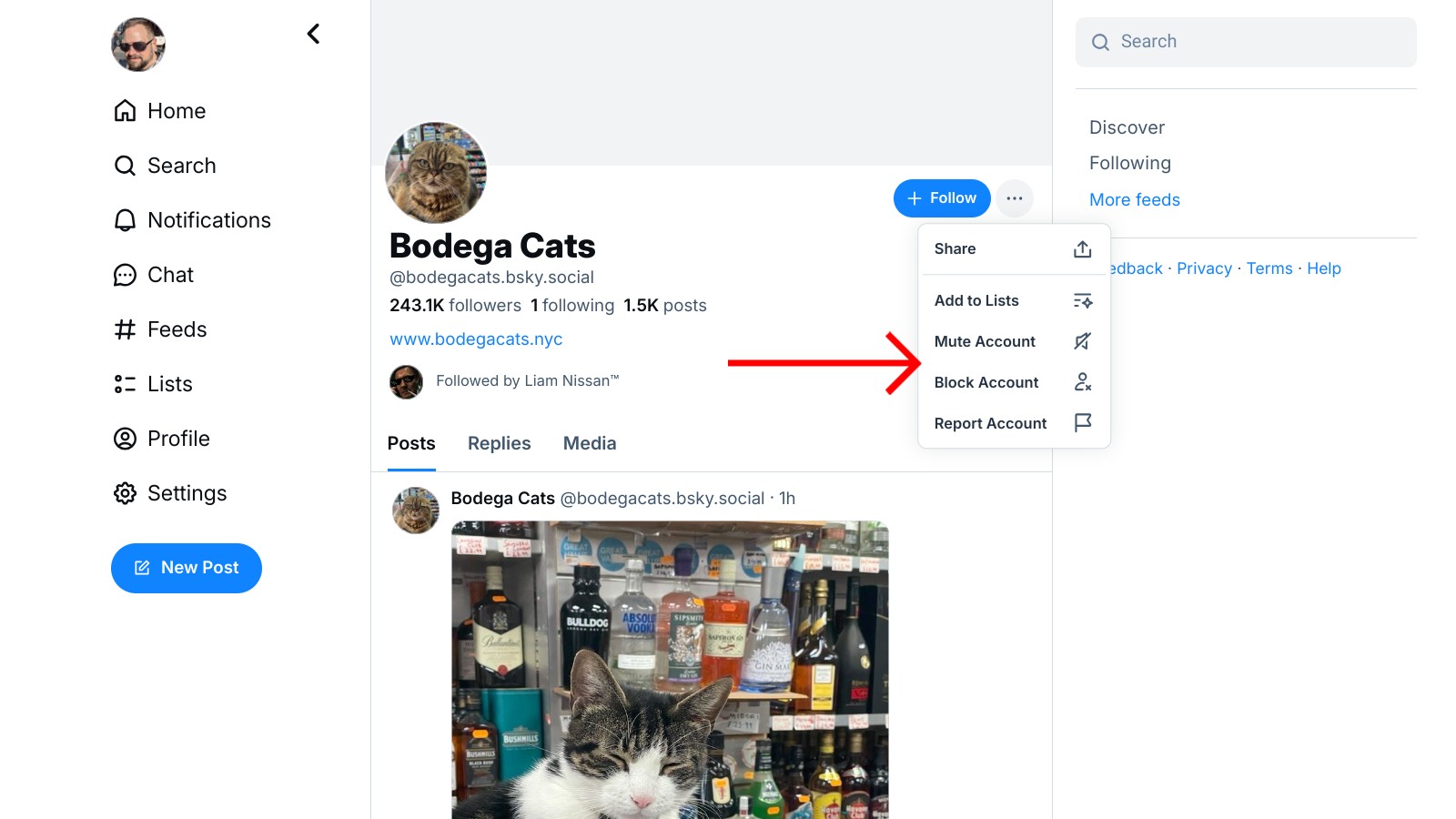
- Custom Feeds: Bluesky’s standout feature, allowing users to create and subscribe to feeds tailored to their interests.
- Decentralized Identity: Gives users more control over their online identity and data.
- Monetization: Twitter has a more mature monetization system for creators and businesses.
5. Decentralization And Data Ownership: What Does It Mean For Users?
Decentralization is at the heart of Bluesky’s vision. It aims to shift control away from a single company and towards users. This means users could potentially:
- Move Their Accounts: Transfer their accounts and data between different providers.
- Choose Algorithms: Select the algorithms that determine what content they see.
- Control Their Data: Have more control over their personal data and how it’s used.
Twitter’s centralized structure gives the company complete control over user data and algorithms.
6. Content Moderation And Safety: Which Platform Is Safer?
Both platforms face challenges in content moderation. Bluesky is experimenting with community-driven moderation and algorithmic filtering to create a safer environment. Twitter’s approach to content moderation has been controversial, with concerns about the spread of misinformation and hate speech.
- Community Moderation: Bluesky allows users to create and subscribe to moderation lists, filtering out unwanted content.
- Algorithmic Filtering: Bluesky is exploring the use of algorithms to detect and filter harmful content.
- Reporting Mechanisms: Both platforms have reporting mechanisms for users to flag inappropriate content.
Alt: Bluesky social media platform feels like earlier versions of Twitter.
7. The Algorithm: How Do They Rank Content?
Twitter’s algorithm is a black box, with its exact workings often debated and criticized. Bluesky aims for more transparency and user choice in algorithms, allowing users to potentially select the algorithms that best suit their needs.
- Transparency: Bluesky aims to make its algorithms more transparent and understandable.
- User Choice: In the future, users may be able to choose from different algorithms to personalize their experience.
- Relevance: Both platforms aim to show users content that is relevant to their interests.
8. Community And Culture: What Are The Vibe Differences?
Bluesky’s community is generally seen as more progressive and tech-focused, with many early adopters coming from the Twitter developer and tech communities. Twitter has a more diverse and mainstream community, encompassing a wider range of interests and viewpoints.
- Early Adopters: Bluesky has attracted many users who are interested in decentralized technology and alternative social media models.
- Diversity: Twitter’s larger size means it has a more diverse community with a broader range of perspectives.
- Vibe: Bluesky is often described as having a more positive and less toxic atmosphere than Twitter.
9. Monetization And Sustainability: How Do They Make Money?
Twitter relies on advertising and subscriptions (Twitter Blue) for revenue. Bluesky is currently funded by venture capital and is exploring various monetization options, including potential premium features and services.
- Advertising: Twitter’s primary revenue source.
- Subscriptions: Twitter Blue offers enhanced features and verification for a monthly fee.
- Venture Capital: Bluesky is currently funded by venture capital.
- Premium Features: Bluesky may introduce premium features or services in the future to generate revenue.
10. The Future Of Social Media: Decentralization Vs. Centralization
Bluesky represents a bet on the future of decentralized social media, where users have more control over their data, algorithms, and online experience. Twitter’s future under Elon Musk is uncertain, but it remains a dominant force in centralized social media.
- User Empowerment: Bluesky aims to empower users with more control and agency.
- Innovation: Decentralization could unlock new forms of social interaction and content creation.
- Scalability: Decentralized networks face challenges in scalability and moderation.
11. How Easy Is It To Switch From Twitter To Bluesky?
Switching to Bluesky involves creating an account and rebuilding your social graph (finding and following people you know). Bluesky is working on tools to make this process easier, such as importing your Twitter following list.
- Account Creation: Simple and straightforward.
- Finding People: Can be challenging initially, as Bluesky has a smaller user base.
- Importing Following List: Bluesky is developing tools to help users import their Twitter following list.
Alt: Searching for Manchester United on Bluesky social network.
12. What Are The Biggest Challenges Facing Bluesky?
Bluesky faces several challenges, including:
- Scalability: Ensuring the platform can handle a large number of users.
- Moderation: Effectively moderating content in a decentralized environment.
- Network Effects: Attracting enough users to create a vibrant and engaging community.
- Monetization: Finding a sustainable business model that aligns with its values.
13. How Does Bluesky Address The Problem Of Bots And Spam?
Bluesky is exploring various methods to combat bots and spam, including:
- Rate Limiting: Limiting the number of actions an account can perform in a given time.
- Reputation Systems: Assigning reputation scores to accounts based on their behavior.
- Human Review: Utilizing human moderators to review flagged content.
14. Can You Use Bluesky And Twitter Simultaneously?
Yes, you can use both platforms simultaneously. Many users maintain accounts on both Bluesky and Twitter to stay connected with different communities.
- Experimentation: Using both platforms allows you to explore the features and communities of each.
- Staying Connected: Maintain contact with friends, family, and colleagues on both platforms.
- Cross-Posting: Some users cross-post content between the two platforms.
15. How Does Bluesky Handle Account Verification?
Bluesky has an account verification system where you can self-verify your account by linking it to a particular domain, and then confirming the link from the domain side (showing that you actually own it and approve the verification). That domain becomes your Bluesky handle. Outside of this limited form, there’s no account verification on Bluesky — and that means it can be hard to determine which accounts are genuine and official.
- Domain Verification: Organizations and individuals can verify their identity by linking their Bluesky account to their domain.
- Community Verification: Bluesky may explore community-based verification methods in the future.
- Combating Impersonation: Verification helps users identify genuine accounts and avoid impersonation.
16. What Are Custom Feeds And How Do They Work?
Custom feeds are a unique feature of Bluesky that allows users to create or subscribe to feeds that filter content based on specific criteria. For example, you could create a feed that only shows posts about a particular topic, or a feed that only shows posts from accounts you trust.
- Filtering: Custom feeds filter content based on keywords, hashtags, accounts, or other criteria.
- Curating: Users can curate their own personalized content experiences.
- Discovery: Custom feeds can help users discover new content and communities.
Alt: Feed options available on the Bluesky social network.
17. What Is The AT Protocol And Why Is It Important?
The AT Protocol (Authenticated Transport Protocol) is the decentralized social networking protocol that Bluesky is built on. It’s important because it enables:
- Decentralization: Allows for multiple providers and greater user control.
- Interoperability: Enables different social networks to communicate with each other.
- Innovation: Fosters innovation by allowing developers to build new applications on top of the protocol.
18. How Does Bluesky Compare To Other Twitter Alternatives?
Several other Twitter alternatives exist, such as Mastodon, Threads and Post.News. Bluesky distinguishes itself through its focus on decentralization, algorithmic choice, and user control.
- Mastodon: Another decentralized social network, but with a different technical architecture and user experience.
- Threads: Meta’s Twitter competitor, leveraging Instagram’s existing user base.
- Post.News: A news-focused social network with a subscription model.
19. What Are The Potential Drawbacks Of Decentralization?
Decentralization also presents potential drawbacks, including:
- Complexity: Can be more complex for users to understand and navigate.
- Moderation Challenges: Moderating content in a decentralized environment can be difficult.
- Scalability Issues: Decentralized networks can face challenges in scaling to a large number of users.
20. Is Bluesky A Viable Replacement For Twitter?
Whether Bluesky can replace Twitter depends on its ability to overcome its challenges and attract a critical mass of users. It offers a compelling vision for the future of social media, but it’s still in its early stages.
- Potential: Bluesky has the potential to become a viable alternative to Twitter.
- Challenges: It faces challenges in scalability, moderation, and network effects.
- Time Will Tell: Only time will tell if Bluesky can achieve its goals.
21. How Does The Lack Of Advertising On Bluesky Affect The User Experience?
The absence of advertising on Bluesky contributes to a cleaner, less intrusive user experience. Users can browse content without being bombarded by ads.
- Uncluttered: A more focused and less distracting environment.
- Focus On Content: Allows users to focus on the content they are interested in.
- Potential Trade-Offs: May require alternative monetization methods in the future.
22. What Happens To Your Data If Bluesky Shuts Down?
Because of the decentralized nature of Bluesky, in theory, if Bluesky as a company shuts down, your data can be migrated to another provider on the AT Protocol.
- Portability: AT Protocol is designed to enable users to take their data where they go.
- Provider Choice: The AT Protocol is designed to let users choose between different service providers.
- Less Reliance: Decreased dependency on single platforms.
23. How Does Bluesky Handle Privacy Compared To Twitter?
Bluesky aims to provide users with more control over their privacy settings and data.
- Granular Control: Potential for more granular control over data sharing and privacy settings.
- Transparency: Aiming for greater transparency in how data is collected and used.
- Data Minimization: Encouraging data minimization practices.
24. What Role Do Moderation Lists Play In Content Filtering On Bluesky?
Moderation lists are user-curated lists of accounts that can be blocked or muted. They play a significant role in content filtering on Bluesky, allowing users to customize their experience.
- Community-Driven: Moderation lists are created and maintained by community members.
- Customization: Users can subscribe to moderation lists that align with their values.
- Scalability: Moderation lists can help scale content moderation efforts.
Alt: Mute and block options available on Bluesky social media.
25. How Does The Character Limit On Bluesky Posts Compare To Twitter?
Bluesky posts are limited to 300 characters. Free users on Twitter are limited to 280 characters per tweet. Twitter Blue subscribers can post longer tweets (up to 25,000 characters).
- Conciseness: Encourages concise communication.
- Readability: Can improve readability and scannability.
- Trade-Offs: May limit the ability to express complex ideas.
26. What Are The Benefits Of Owning Your Own Domain On Bluesky?
Owning your own domain on Bluesky allows you to verify your identity and establish a unique online presence.
- Verification: Confirms your ownership of the domain.
- Branding: Allows you to use your domain as your Bluesky handle.
- Control: Gives you more control over your online identity.
27. How Does Bluesky Plan To Evolve Its Features And Functionality?
Bluesky is actively developing new features and functionality, including:
- Algorithmic Choice: Allowing users to choose different algorithms.
- Enhanced Moderation Tools: Providing users with more tools to manage their experience.
- Monetization Options: Exploring sustainable monetization models.
28. What Are The Potential Implications Of Algorithmic Choice For Social Media?
Algorithmic choice could have significant implications for social media, including:
- Personalization: More personalized content experiences.
- Filter Bubbles: Potential for increased filter bubbles and echo chambers.
- Transparency: Greater transparency in how algorithms work.
29. How Does Bluesky Address The Risk Of Filter Bubbles?
Bluesky is exploring ways to address the risk of filter bubbles, such as:
- Algorithm Diversity: Encouraging the development of diverse algorithms.
- Discovery Tools: Providing tools to help users discover content outside their filter bubble.
- Education: Educating users about the risks of filter bubbles.
30. What Is The Long-Term Vision For Bluesky?
The long-term vision for Bluesky is to create a decentralized social network that empowers users with more control, choice, and agency.
- User Empowerment: Putting users in control of their data and experience.
- Innovation: Fostering innovation in social media technology.
- Open Standards: Promoting open standards and interoperability.
31. How Does Bluesky Ensure Interoperability With Other Platforms?
Bluesky’s use of the AT Protocol promotes interoperability, potentially allowing it to connect with other social networks that adopt the same protocol.
- Standardized Protocol: The AT Protocol provides a standardized way for different platforms to communicate.
- Open Source: The AT Protocol is open source, allowing anyone to implement it.
- Future Integration: Potential for future integration with other decentralized social networks.
32. What Measures Does Bluesky Take To Protect User Data Security?
Bluesky implements various security measures to protect user data, including:
- Encryption: Encrypting data in transit and at rest.
- Access Controls: Restricting access to user data to authorized personnel.
- Regular Audits: Conducting regular security audits to identify and address vulnerabilities.
33. How Does Bluesky Handle Copyright Infringement And Intellectual Property Issues?
Bluesky has policies in place to address copyright infringement and intellectual property issues, including:
- Reporting Mechanisms: Providing users with a way to report copyright infringement.
- Takedown Notices: Processing takedown notices in accordance with copyright law.
- Repeat Offender Policy: Implementing a repeat offender policy for users who repeatedly infringe on copyright.
34. What Resources Are Available For Developers Who Want To Build On The Bluesky Platform?
Bluesky provides various resources for developers, including:
- Documentation: Comprehensive documentation on the AT Protocol and Bluesky APIs.
- SDKs: Software development kits for various programming languages.
- Community Support: A community forum for developers to ask questions and share knowledge.
35. How Does Bluesky Compare To Traditional Social Media Platforms In Terms Of Energy Consumption And Environmental Impact?
Decentralized networks like Bluesky have the potential to be more energy-efficient than centralized platforms, but this depends on the specific implementation.
- Potential Efficiency: Decentralization can reduce reliance on large data centers.
- Implementation Matters: Energy consumption depends on the efficiency of the underlying infrastructure.
- Ongoing Research: Research is ongoing to assess the environmental impact of decentralized networks.
36. What Are The Key Differences Between Bluesky’s Approach To Content Moderation And That Of Mastodon?
While both are decentralized, Bluesky and Mastodon differ in their approach to content moderation:
- Bluesky: Aims for user choice in moderation through algorithms and moderation lists.
- Mastodon: Relies on instance-based moderation, where each instance (server) has its own rules and moderators.
37. How Does Bluesky Plan To Address The Potential For Misinformation And Disinformation On The Platform?
Bluesky is exploring various strategies to combat misinformation and disinformation, including:
- Community Fact-Checking: Encouraging community-based fact-checking initiatives.
- Algorithmic Detection: Using algorithms to detect and flag potential misinformation.
- Media Literacy Education: Promoting media literacy education to help users identify misinformation.
38. How Does Bluesky Handle Disputes Between Users?
Bluesky’s decentralized nature makes it challenging to handle disputes between users directly. It relies on community-based moderation and user-controlled filtering to address conflicts.
- User Empowerment: Empowering users to manage their own experience and filter out unwanted content.
- Community Standards: Relying on community standards to guide user behavior.
- Limited Intervention: Limited ability to intervene directly in disputes between users.
39. What Is The Role Of Bluesky’s Parent Company In The Platform’s Governance?
Bluesky PBLLC, the parent company, plays a role in the platform’s development and governance, but the long-term goal is to transition to a more decentralized governance model.
- Initial Development: Bluesky PBLLC is responsible for the initial development of the platform.
- Gradual Decentralization: The plan is to gradually transition to a more decentralized governance model.
- Community Involvement: The goal is to involve the community in decision-making.
40. How Does Bluesky Differ From Twitter In Terms Of Its API And Developer Ecosystem?
Bluesky aims to provide a more open and developer-friendly API than Twitter, fostering a vibrant developer ecosystem.
- Open API: A more open and accessible API for developers.
- Developer Tools: Providing developers with the tools and resources they need to build on the platform.
- Community Support: Fostering a supportive community for developers.
41. What Are The Potential Benefits Of Bluesky’s Decentralized Architecture For Freedom Of Speech?
Bluesky’s decentralized architecture has the potential to promote freedom of speech by:
- Resistance To Censorship: Making it more difficult for governments or corporations to censor content.
- Provider Choice: Allowing users to choose providers that align with their values.
- User Control: Giving users more control over their own data and online experience.
42. How Does Bluesky Intend To Balance Freedom Of Speech With The Need To Moderate Harmful Content?
Bluesky aims to balance freedom of speech with the need to moderate harmful content through a combination of:
- User Choice: Empowering users to filter content they don’t want to see.
- Community Standards: Establishing clear community standards for acceptable behavior.
- Algorithmic Detection: Using algorithms to detect and flag harmful content.
43. What Are The Potential Risks Of Allowing Users To Choose Their Own Algorithms On Bluesky?
Allowing users to choose their own algorithms on Bluesky presents potential risks, including:
- Filter Bubbles: Increased filter bubbles and echo chambers.
- Misinformation Spread: Potential for the spread of misinformation if users choose algorithms that prioritize engagement over accuracy.
- Extremism: Potential for the formation of extremist communities if users choose algorithms that promote radical content.
44. How Does Bluesky Plan To Mitigate The Potential Risks Associated With Algorithmic Choice?
Bluesky plans to mitigate the potential risks associated with algorithmic choice by:
- Algorithm Transparency: Encouraging transparency in how algorithms work.
- Algorithm Diversity: Promoting the development of diverse algorithms.
- Education: Educating users about the risks of filter bubbles and misinformation.
45. What Are The Potential Economic Implications Of Decentralized Social Media Platforms Like Bluesky?
Decentralized social media platforms like Bluesky have the potential to disrupt the existing social media economy by:
- Shifting Value To Users: Shifting value from corporations to users.
- Creating New Economic Models: Creating new economic models for content creation and distribution.
- Empowering Creators: Empowering creators to monetize their content directly.
46. How Does Bluesky Compare To Web3 Social Media Platforms?
While Bluesky shares some similarities with Web3 social media platforms, it differs in its approach to decentralization and its focus on user experience.
- AT Protocol: Bluesky’s AT Protocol is designed to be more practical and scalable than some Web3 technologies.
- User Experience: Bluesky prioritizes user experience, aiming to create a platform that is easy to use and accessible to a wide audience.
- Gradual Adoption: Bluesky is taking a more gradual approach to decentralization, rather than fully embracing Web3 principles from the outset.
47. What Are The Ethical Considerations Surrounding The Development And Use Of Decentralized Social Media Platforms?
Ethical considerations surrounding the development and use of decentralized social media platforms include:
- Responsibility For Content: Determining who is responsible for moderating harmful content.
- Data Privacy: Protecting user data privacy in a decentralized environment.
- Algorithmic Bias: Addressing potential bias in algorithms.
48. How Can Users Contribute To The Development And Governance Of Bluesky?
Users can contribute to the development and governance of Bluesky by:
- Providing Feedback: Providing feedback on the platform’s features and functionality.
- Participating In Community Discussions: Participating in community discussions about the platform’s future direction.
- Developing Tools And Applications: Developing tools and applications for the platform.
49. What Are The Potential Long-Term Societal Impacts Of Decentralized Social Media?
The potential long-term societal impacts of decentralized social media are far-reaching and include:
- Increased Freedom Of Speech: Greater freedom of speech and expression.
- Empowerment Of Individuals: Empowerment of individuals to control their own data and online experience.
- Disruption Of Existing Power Structures: Disruption of existing power structures in the media and technology industries.
50. Where Can I Learn More About Bluesky And The AT Protocol?
You can learn more about Bluesky and the AT Protocol at:
- Bluesky’s Website: https://bsky.app/
- AT Protocol Documentation: https://atproto.com/
- Bluesky’s Blog: https://blueskyweb.xyz/blog
Navigating the world of social media can be overwhelming, especially when deciding which platform aligns with your values and needs. COMPARE.EDU.VN is here to simplify your decision-making process. We offer comprehensive and objective comparisons, allowing you to weigh the pros and cons of various platforms like Bluesky and Twitter. Don’t make choices blindly – visit COMPARE.EDU.VN today and make an informed decision. Explore detailed comparisons, user reviews, and expert analysis to find the perfect fit for your social media journey.
Address: 333 Comparison Plaza, Choice City, CA 90210, United States.
Whatsapp: +1 (626) 555-9090.
Website: compare.edu.vn